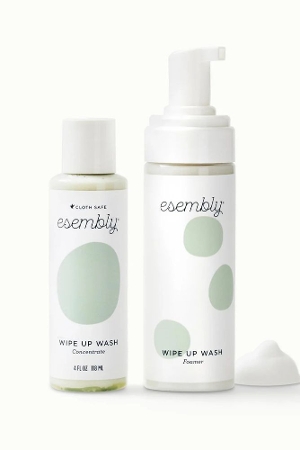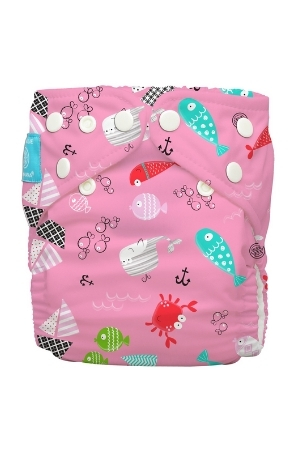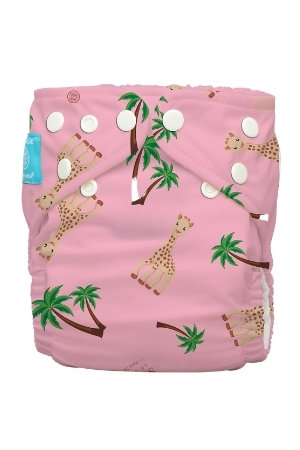Cloth Diapers - Sustainable Diapering Is Easier Than You Think
You may not have made up your mind yet about cloth diapering, and that’s a perfectly good place to begin. All of the moms at Figure 8 used cloth diapers for at least part of our babies’ diapering journeys. We can tell you from personal experience that cloth diapering is easier than most people think. It’s a more sustainable and wholesale way to diaper, and it ends up being much lighter on your wallet. Scroll down to the bottom of this page to find out the key considerations for cloth diapering.
Clearance Rack
Where to Begin with Cloth Diapers
Cloth Diapers: You need about 2 dozen to take your baby from birth to potty training
The real eye-opener that pushed us into cloth diapering was the number of diaper changes a newborn needs – about 10-12 a day which amounts to 300 diapers in the first month! Newborn poops may be tiny, but they are frequent, especially in breastfed babies, and we were going through diapers like crazy. Cloth diapering was really practical and economical for this stage. We especially appreciated cloth diapers that have a removable inner layer because you could simply change the inner and reuse the outer cover.
The economy of cloth diapering continues as baby grows. From birth to potty training, your baby will go through 5000 – 7000 diaper changes! That’s a few thousand dollars you can put to other use and a much lighter environmental footprint. If you even choose to do a combination of cloth and disposables you could lighten your environmental footprint by thousands of diapers.
If you’re cloth diapering full-time, we recommend having 2 dozen cloth diapers (for 2 part systems, 2 dozen inners, fewer outers). But if you’re unsure and just want to try it out, start with 6 cloth diapers to be used interchangeably with disposables.
Cloth diapering may be easier than you think
Are you squeamish about poopy diapers? You’re not the only one. A diaper sprayer is easy to install directly onto your toilet and allows you to conveniently “jet” solids off diapers into your toilet bowl so they’re somewhat clean by the time they go in the wash. Soiled diapers can be accumulated and washed every 2-3 days. Like whites and darks, the diaper wash becomes a part of your weekly laundry routine.
You may also be glad to know that breastfed baby poop is quite different from regular poop and importantly, it doesn’t stink like regular bowel movements!
Poopy diapers do get a little ickier once baby starts eating solid foods. Diaper liners come in very handy at this stage and have saved many cloth diapering journeys! These disposable sheets line the cloth diaper so you can simply lift off the ick and throw it away. We carry biodegradable soft bamboo diaper liners that can be flushed.
Esembly Diapers are easy to use & they’re organic!
Our top priorities when we evaluate cloth diapers are ease of use, reliability, comfort and quality of materials. We are really excited to bring you Esembly organic cotton diapers. Their 2 part diapering system is one of the easiest we’ve come across and the inner layer that comes in contact with baby’s skin is made from soft 100% Organic Cotton!
Esembly diapers are made up of two parts: an absorbent Inner and a waterproof Outer.
The Inner: Is a soft, comfy organic cotton diaper with a uniquely layered core that maximizes its thirstiness. You change the Inner every time your change baby.
The Outer: Is a waterproof and blowout-proof cloth diaper cover that layers over the Inner. You only change the outer if it gets soiled. We love Esembly’s adorable prints and the fact that these outers also can be worn on their own as a swim diaper.
Organic cotton diapers are gentle on baby’ skin and the cleanest way to diaper
Consider the fact that your baby’s diaper is the inner-most layer and he/she will be diapered 24/7 for the first few years of life. Organic cloth diapers have at least as much benefit as organic clothing, if not more.
The disposable diaper industry is self-regulated, and disposable diapers have been known to contain a laundry list of questionable materials including: VOCs, Phthalates, Dioxins, fragrances, dyes, adhesives, and of course the key ingredient for the absorbency in disposables - superabsorbent polymers which are petroleum-based. As concerned moms we see these names pop up like red flags in association with all manner of babies products and we’d rather steer well-clear of anything that’s been labeled a carcinogen, hormone disruptor, respiratory irritant or allergen.
If we can diaper organically, save money, reduce waste and give our babes the best, we’re all for it!
















































































